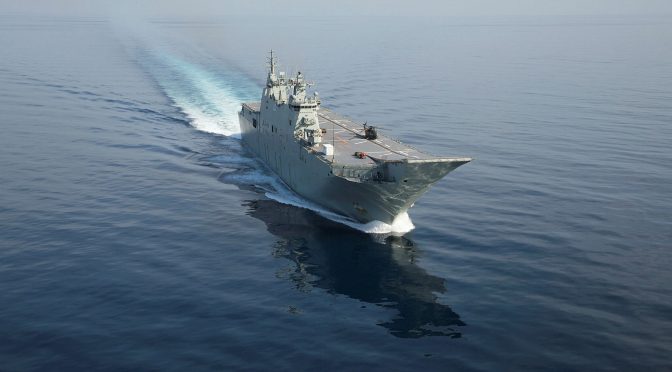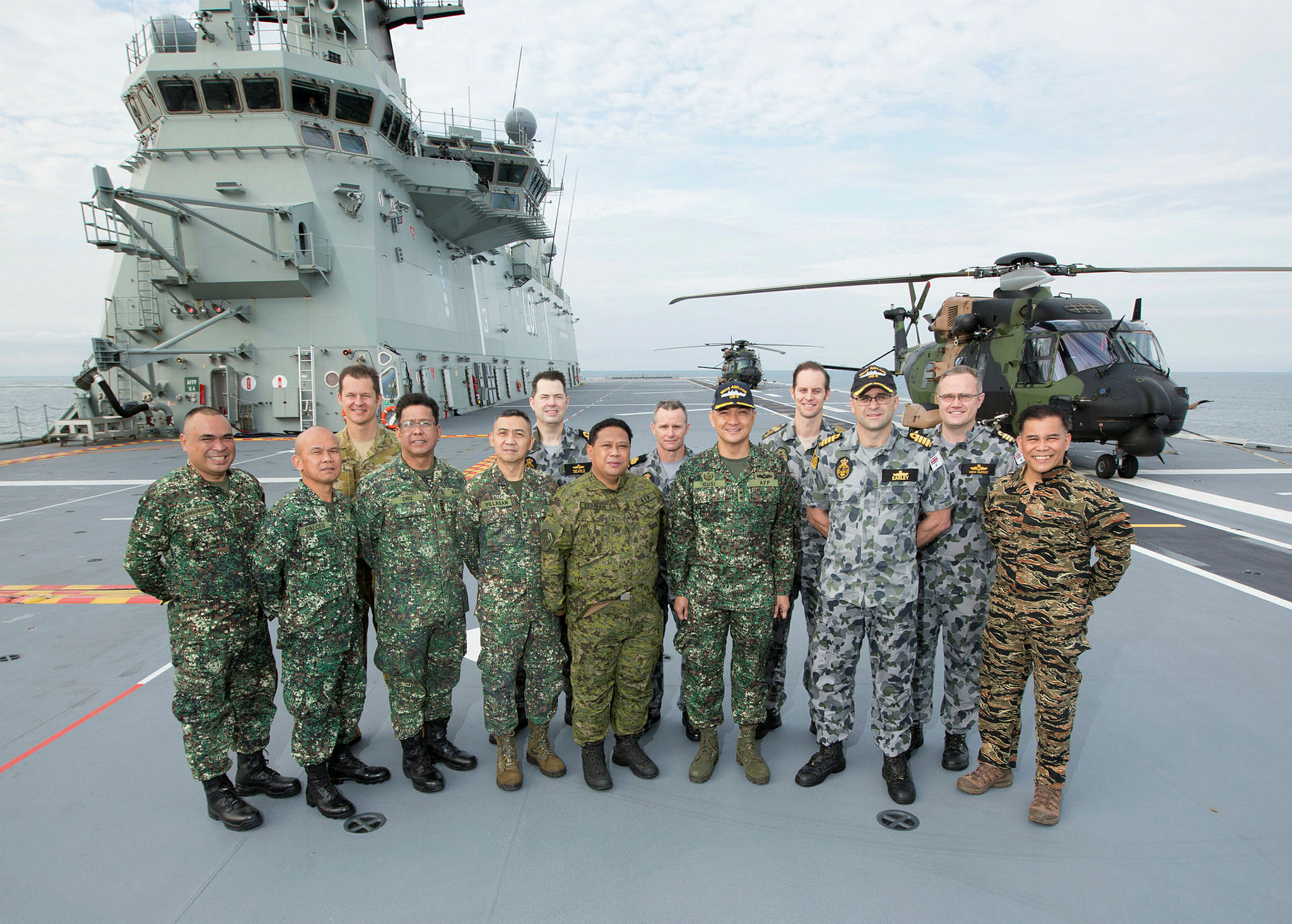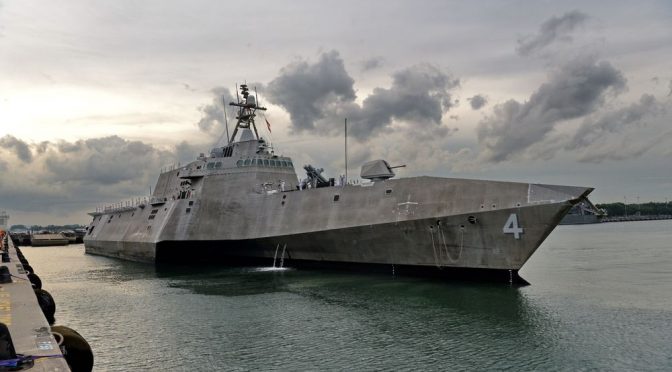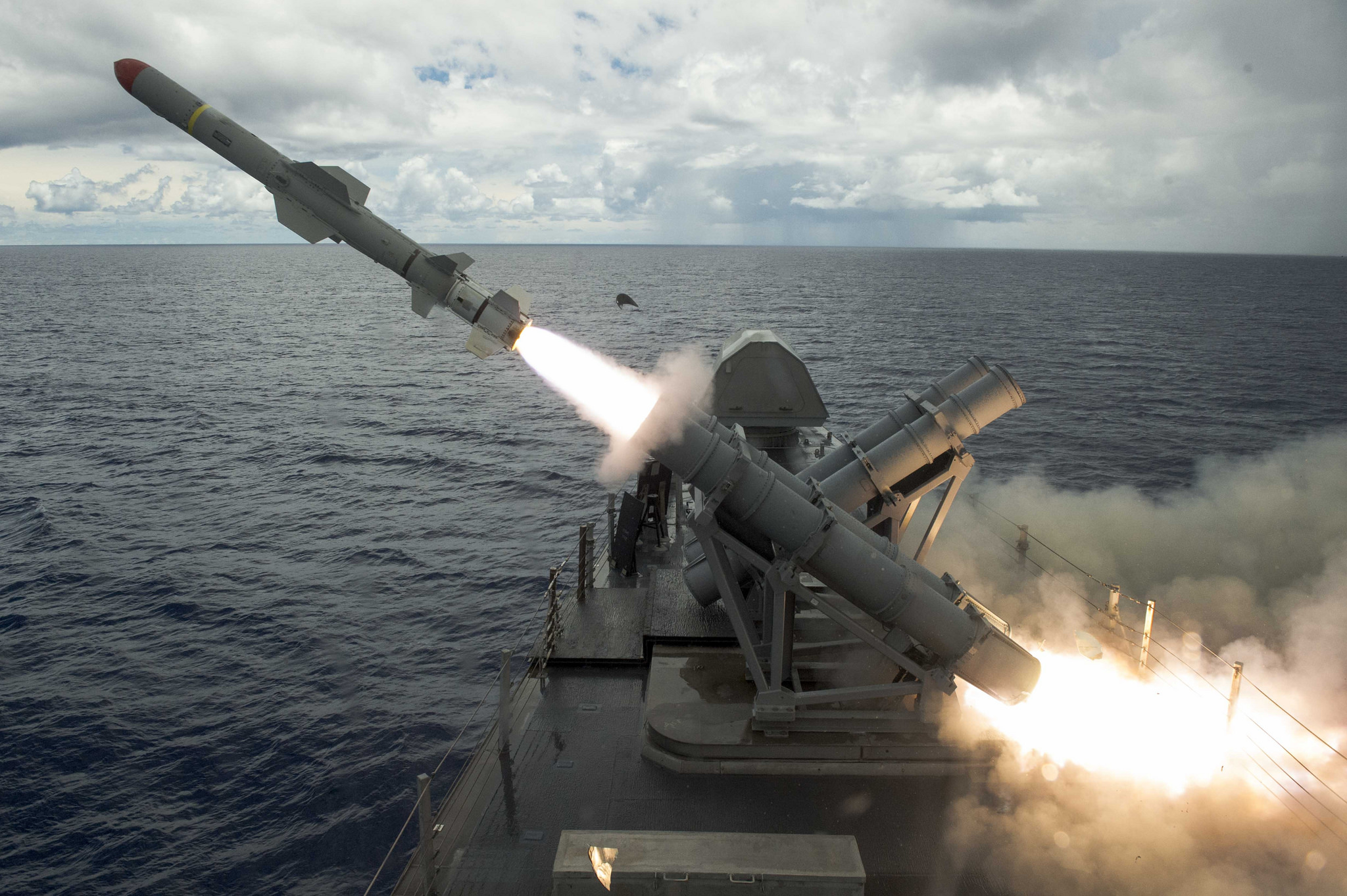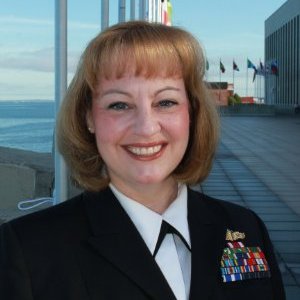Maritime Strategy for Great Power Competition Week
By Commodore Olutunde Oladimeji, NN (ret.)
Anytime we see photos of international naval exercises, involving many warships, large and small, what comes to mind is what we can call an ensemble of naval forces at sea. Such an ensemble often looks like a task force from what Admiral Mike Mullen, in 2005, then U.S. Chief of Naval Operations, called a global 1000-ship Navy. Admiral Mullen’s concept is a fleet that would comprise of “all freedom-loving nations, standing watch over the seas, standing watch over each other.” In spite of renewed great power competition, multilateral cooperation between the world’s navies must grow to deal with common threats and forge constructive bonds between nations.
Classical naval battles were not always fought for portions of seawater but to ultimately influence events on land for economic benefits of the naval powers. Although usually configured as instruments of war, navies also deter war, promote peace, and in doing that, promote commerce, protect trade routes, ensure safety of people and goods on the high seas. Although navies all over the world are established to fight if it comes to that, navies are more than fighting instruments. Navies are also the most potent maritime security agency to prevent numerous illegalities capable of hampering the economic well-being and prosperity of their people. But within each maritime nation no navy or any other maritime security agency can do it alone. It is unfortunate that, for political, legal, and bureaucratic reasons, maritime security roles are fragmented among many agencies.
For many reasons, international maritime security deserves some form of a global togetherness arrangement. A standing ensemble at sea is desirable and all littorals should be encouraged to join. After all the sea is one, by and large. It is interconnected and it is a universal habitat where Sailors and merchant ships carry out their duties. Naval customs and ceremonies in this habitat are similar where the conviviality of when navies make port calls is usually memorable in spite of the differing political positions of littoral nations.
It is true that coastal nations have enormous potential benefits for having the fortune of facing the ocean, but there are some costs to bear and some investments to make to actualize their objectives. Many successful maritime nations have done that and are reaping huge benefits from their efforts.
It is significant to look at a list of the largest economies in the world. They are invariably nations with a coast along a great body of water, and many can be considered maritime nations. Their maritime and naval investment efforts are bringing them wealth. They include the United States, Japan, Germany, China, United Kingdom, France, Italy and Canada. Others are Spain, Brazil, Russia, India, South Korea, Mexico, Australia, and the Netherlands. The other members of this exclusive club that Nigeria aspires to join are Turkey, Belgium, Sweden and Switzerland.
It is not by accident that these international economic giants are industrial or industrializing nations. In addition they are vibrant maritime nations, trading nations, shipping nations, and nations with coherent national maritime strategy and appropriate naval forces to protect what they have.
Even the land-locked Switzerland is no exception to this general maritime rule and route to economic greatness. Switzerland has a long tradition of civilian navigation, both on its lakes, rivers, and on the high seas. It has a civilian high seas fleet of merchant vessels, whose home port is Basel from where the country connects to the port of Rotterdam in the Netherlands and thus to the sea trade network. Swiss industry and commerce rely on this connection, exploited for centuries by Swiss Rhine barges, for a substantial part of their imports and exports.
All these maritime economies and others that are striving to make it to the list of the top 20 have one thing in common. They have an enlightened appreciation of the importance of the sea, have developed coherent national maritime strategy and have considerable investment in merchant shipping and naval forces.
From time immemorial navies have always been closely associated with the economic prosperity of their nations. This is so because navies that guarantee benefits to littoral states in terms of maritime trade and enjoyment of sea-based resources such as fish, shrimps, and oil are not hindered or stolen by other, more determined and better armed people. Navies, whatever names they are called, are also instruments of law enforcement at sea. Navies usually have robust, multi-capable platforms with mobility, flexibility and endurance. They have well-trained officers and personnel, and they carry lethal war-fighting capabilities which are adaptable to deterrence and to fighting determined and well-equipped pirates and terrorists at sea.
Security of the seas is important and impacts us all. Today the enemies for which navies prepare are not only state actors. Given its open access to all comers, the sea has become a home of very many illegalities, a den of pirates, illegal bunkerers, crude oil thieves, smugglers, poachers, polluters, drug traffickers arms dealers, terrorists and other economic saboteurs. In view of the huge number and sophistication of these misusers of the sea, globally, navies are teaming up for maritime security protection, given their inbuilt scalable capabilities to deal with all eventualities. Therefore, opportunities are available for maritime forces to operate together regularly, and stamp out criminals and illegalities at sea. When this happens, the vision of the sea becoming a totally peaceful commune for humanity and for economic prosperity can become a reality. However, all this will happen only if the different political and economic systems allow naval operational harmony to prevail and if solutions can include poor littoral nations. In technological terms, these underdeveloped states are the weakest links in the chain of expected togetherness.
For decades, the United States Navy has actively taken up the mantle of global leadership by promoting maritime security partnerships globally through sea power symposia and conferences, joint operational training and equipment transfer using under the auspices of the NIPO (Navy International Programs Office). The growth of multilateral cooperation among African navies with each other and the U.S. Navy is an excellent example of this principle in practice.
African Partnerships and Security
Nations that understand this central purpose of navies equip them to optimize the naval strategy and thereby maximize returns of their investments. Those nations that ignore building and maintaining effective navies because they lack the vision, resources, the will, or are distracted by other political or security challenges on land, like Nigeria now bogged down by many political disorder and insurgencies, often become victims of national and international economic disillusionment.
The realities in the world today suggest that no one nation can do it alone in maritime security. Admiral Harry Ulrich III, a former commander of U.S. Naval Forces Europe and Africa, once declared that “maritime security is a team sport.” No navy can do it alone whether at the global, regional, sub-regional and at the national level. At the African regional level many calls have been made by successive Nigerian Chiefs of the Naval Staff, for African navies to cooperate to curb the activities of sea pirates in the continent’s coastal waters.
The African continent especially needs to learn the hard lessons about the power of sea power. As a South African Minister for Intelligence Services, Ronnie Kasrils, reminded African leaders at a Symposium on Sea Power for Africa in 2005:
“The destiny of this continent has for centuries been determined by the sea powers of the world, not by the people of the continent. That has been the case because they had the ability, the sea power, to voyage to Africa and to impose their will…Since the seventh Century, every invasion, every colonization, and every attack has come by sea.”
For several decades, the American global naval system has been unrelenting in driving global, regional, sub-regional and national naval partnerships, especially in the West and Central Africa. What started as an annual Training Cruise in the 1970s has metamorphosed into a U.S. African Command, coordinating an annual multi-national maritime exercise appropriately named Obangame Express. It brings together African, European, South American, and U.S. forces to enhance cooperation and expertise in maritime security operations.
Incidentally, “Obangame” which means “togetherness” comes from the Fang language of northern Gabon, Southern Cameroon and other parts of Central Africa. Obangame Express gives the partner nations the opportunity to work together, share information, and refine tactics, techniques, and procedures in order to assist the Gulf of Guinea maritime nations to build capacity to monitor and enforce their territorial waters and exclusive economic zones.
The United States has not attained the commanding height of coordinating the international maritime security cooperation out of the blue. This status has come out of the many decades of persistent pursuit of sea power advocacy, of which African people and governments should buy into and support. The South African Navy, Nigerian Navy, Senegalese Navy, Ghana Navy, and other active navies in Africa should come together and learn to interoperate for the security and economic benefits of the region. But habits of togetherness, led by navies, should start within the maritime communities of each nation. This is the foundation on which international togetherness in maritime security can be built.
How Maritime Nations Task and Empower their Navies
European Union Navies: Multinational European Union Naval Forces (EU NAVFOR) are engaged in a multi-tasking deployment to counter piracy in the Horn of Africa, protect the World Food Program to Somalia, and give logistic support to the African Union troops on peacekeeping operations in Somalia.
India: In 2009, against the backdrop of the Mumbai terrorist attack, the Union Government of India designated the Indian Navy as the authority responsible for overall maritime security, which includes coastal and off-shore security. The Navy will be assisted by the Coast Guard, state maritime police, and other central and state agencies. When the Minister of Defence announced the decision, he explained that the government decided to set up joint operation centers in Mumbai, Visakhapatanam, Kochi, and Port Blair. A national command, control, communication and intelligence network for real time maritime domain awareness would also be set up.
Brazil: Under the National Defense Strategy unveiled in 2008, the Brazilian Navy is tasked with developing a force to protect the country’s huge “sub-salt” oil reserves, the Amazon river basin and its 7,491 kilometers (4,655 miles) of coastline. The oil fields, located off Brazil’s southeast Atlantic coast beneath kilometers of ocean and bedrock, could contain more than 100 billion barrels of high-quality recoverable oil, according to official estimates. In a speech to the Navy’s top brass in June, then-President Dilma Rousseff stressed that the buildup, including the acquisition of the country’s first nuclear-powered submarine, was a key “instrument of deterrence.”
Pakistan: Apart from a role in Cooperative Maritime Security, the Pakistani Navy is also undertaking independent operations to protect its flag carriers in the Indian Ocean and effectively counter threats posed to Pakistani economy due to rise in piracy incidents at sea.
Canada: The Canadian Navy projects and protects Canada’s interests ashore and in distant places, it protects the passage of trade upon the seas, it participates in the monitoring of Canada’s ocean areas, and assists other government departments in the enforcement of Canadian maritime laws.
United States of America: When the American Revolution came to an end, George Washington was sworn in on 30 April 1789 as the first President of the United States. His first priority was to establish economic stability in the wake of $70 million debt accumulated during the war. To lead the task of economic reform, George Washington appointed Alexander Hamilton, his former aide-de-camp, as the first U.S. Secretary of the Treasury. Among the initiatives in Alexander Hamilton’s economic reform plan was the formation of a strong, seagoing military force then known as “Revenue Marine.”
For over two centuries the U.S. Coast Guard has safeguarded United States’ maritime interests in the heartland, in the ports, at sea, and around the globe. What is in a name? It may be called a coast guard, but it is reckoned to be the sixth largest navy in the world. It was configured from the very beginning as an “economic force,” so to say, with military readiness embedded. That makes the USCG a model navy for many third world countries. It is not surprising that it is the service of choice by the United States’ to woo coastal nations in Africa and other parts to the world to be maritime security partners.
By law, the Coast Guard has 11 missions:
- Ports, waterways, and coastal security
- Drug interdiction
- Aids to navigation
- Search and rescue
- Living marine resources
- Marine safety
- Defence readiness
- Migrant interdiction
- Marine environmental protection
- Ice operation
- Other law enforcement
China: China has come out boldly to proclaim that it needs “a strong navy to protects interests.” And that China needs a strong navy to protect its interests on the high seas, too. This is against the backdrop of what China sees as unnecessary apprehension in the West about the on-going revival of the Chinese Navy.
The Chinese aircraft carrier and its trial runs reflect the Chinese Navy’s growing competence in defending the country’s sovereignty and maritime interests. With a coastline of 18,000 kilometers, more than 6,500 islands, and about 3 million square kilometers of maritime area, China needs a strong and modern navy to prevent any violation of its territory, sovereignty over the islands and maritime interests in its waters.
The country became the world’s largest exporter in 2009 and imported 63 percent of its iron ore and 55 percent of its crude oil needs in 2010. The safety of China’s personnel, assets and shipping lanes is very important for its economy.
Gulf of Guinea Navies: In consonance with global developments and best practices, the Gulf of Guinea navies which were before isolated, are now teaming up to fight the menace of sea piracy in the sub-region. The current global concern about the Gulf of Guinea also has to do with the area’s growing importance as an oil producing region, leading the U.S. to increase its military presence in the area.
The need to enhance maritime security in the Gulf of Guinea was one the reasons behind the conduct of the joint sea exercise Obangame Express 2011. It was coordinated by the U.S. Coast Guard in concert with Navy units from Nigeria, Angola, Cameroon, Equatorial Guinea, Gabon and Sao Tome and Principe
Nigeria: Nigeria is a nation with the good fortune to have a considerable coastline sea and an economy critically dependent on the ocean resources and marine transportation.
By law the Nigerian Navy is specifically tasked with:
- Defence of Nigeria by sea;
- Enforcement and assisting in coordinating the enforcement of all customs laws, including anti-illegal-bunkering;
- Fishery and immigration laws of Nigeria;
- Enforcement and assisting in coordinating the enforcement of all national and international maritime laws ascribed or acceded to by Nigeria;
- Making of charts and coordinating of all national hydrographic surveys;
- Promoting, coordinating and enforcing safety regulations in the territorial waters and the EEZ of Nigeria.
Add to all these, sea piracy, human trafficking, narcotic smuggling, marine safety, search and rescue, and pollution control are also a part of the Nigerian Navy’s missions. Expectations by Nigerians for their Navy are very high. But few are aware of two decades of decline of the Navy’s fleet.
In addition many people are not aware that coastal security is a complex issue which requires seamless coordination across numerous government departments and agencies such as NIMASA, NPA, Customs, Immigration, Marine Police, and Inland Waterways. It also requires the setting up of technological expensive infrastructure. All that will cost a lot of financial resources.
But there are arguments in maritime security quarters that the required money can be made available if policy makers focus on costs and benefit thinking. That means they should fund the Nigerian Navy appropriately as a leading African nation in the world.
Conclusion
Economic gains are behind the building of all navies. Remove the veil from all strategic postulation and posturing, especially from the large and medium sea power nations, and one will discover that the whole purpose of navies is to further the economic interests of their states. But then, any nation that wants its navy to discharge its roles credibly must provide for that navy so that it can join the ensemble of navies working together. Vice Admiral Patrick Sebo Koshoni, a former Nigerian Chief of the Naval Staff once said:
“If you do not fund your Navy adequately, you will not get your Navy to discharge its roles optimally. If we don’t discharge our roles optimally, we are hazarding, willy-nilly, the economic lifelines of this country, which are predominantly offshore based.”
The international environment is one of violent peace, occasioned by sea piracy and many other illegalities at sea. This is stimulating the teaming up of global, regional, and coastal navies for collective maritime security. Also within coastal nations are a cornucopia of threats to peaceful resource enjoyment – from militants, pirates, illegal bunkerers, drugs, traffickers, and terrorists.
The bottom line is that across the globe navies are being charged with the leadership of the maritime security of their nations. But no navy can perform without significant legislative and financial support from national leaders. You can’t be an effective team player if you can’t get on the field.
Olutunde Oladimeji is a retired commodore of the Nigerian Navy. He is a 1972 graduate of Mass Communication, University of Lagos and earned a Master’s degree in International Relations from OAU University, Ile-Ife. He served in the Nigerian Navy for 22 years and finished as Director of Naval Information and Plans before retiring in 1994. He has written many books and articles for defense and naval magazines, including the U.S. Naval Institute Proceedings and has participated in many maritime security-related conferences in Nigeria and abroad.
Featured Image: The former Coast Guard cutter Gallatin was transferred to the Nigerian navy Wednesday at the Federal Law Enforcement Training Center in North Charleston in May 2014. (FLETC)


